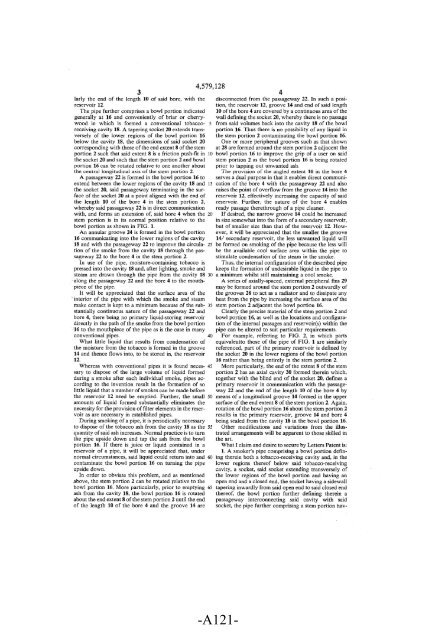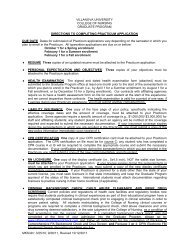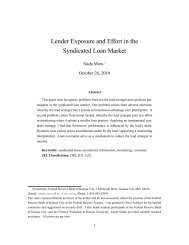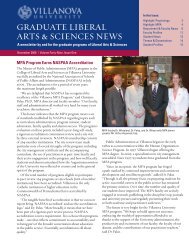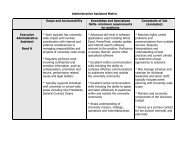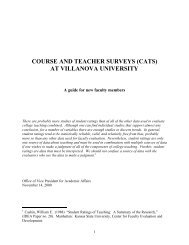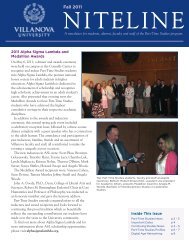Joint Appendix (Part 1)
Joint Appendix (Part 1)
Joint Appendix (Part 1)
You also want an ePaper? Increase the reach of your titles
YUMPU automatically turns print PDFs into web optimized ePapers that Google loves.
34,579,128larly the end of the length 10 of said bore, with thereservoir 12.The pipe further comprises a bowl portion indicatedgenerally at 16 and conveniently of briar or cherrywoodin which is formed a conventional tobaccoreceivingtobaccodisconnectedfrom the passageway 22. In such a position,the reservoir 12, groove 14 and end of said length10 of the bore 4 are covered by a continuous area of thewall defining the socket 20, whereby there is no passage5 from said volumes back into the cavity 18 of the bowlcavity 18. A tapering socket 20 extends transverselyof the lower regions of the bowl portion 16below the cavity 18, the dimensions of said socket 20corresponding with those ofthe end extent 8 ofthe stemportion 16. Thus there is no possibility of any liquid inthe stem portion 2 contaminating the bowl portion 16.One or more peripheral grooves such as that shownat 28 are formed around the stem portion 2 adjacent theportion 2 such that said extent 8 is a friction push-fit in 10bowl portion 16 to improve the grip of a user on saidthe socket 20 and such that the stem portion 2 and bowlportion 16 can be rotated relative to one another aboutthe central longitudinal axis of the stem portion 2.A passageway 22 is formed in the bowl portion 16 tostem portion 2 as the bowl portion 16 is being rotatedprior to tapping out unwanted ash.The provision of the angled extent 10 in the bore 4serves a dual purpose in that it enables direct communicationof the bore 4 with the passageway 22 and alsoextend between the lower regions of the cavity 18 and 15the socket 20, said passageway terminating in the surfaceof the socket 20 at a point aligned with the end ofthe length 10 of the bore 4 in the stem portion 2,whereby said passageway 22 is in direct communicationwith, and forms an extension of, said bore 4 when the 20stem portion is in its normal position relative to thebowl portion as shown in FIG. 1.An annular groove 24 is formed in the bowl portion16 communicating into the lower regions of the cavityraises the point of overflow from the groove 14 into thereservoir 12, effectively increasing the capacity of saidreservoir. Further, the nature of the bore 4 enablesready passage therethrough of a pipe cleaner.If desired, the narrow groove 14 could be increasedin size somewhat into the form ofa a secondary reservoir,but of smaller size than that of the reservoir 12. However,it will be appreciated that the smaller the groove14/ secondary reservoir, the less unwanted liquid will18 and with the passageway 22 to improve the circula- 25be formed on smoking of the pipe because the less willtion of the smoke from the cavity 18 through the passageway22 to the bore 4 in the stem portion 2.In use of the pipe, moisture-containing tobacco ispressed into the cavity 18 and, after lighting, smoke andbe the available cool surface area within the pipe tostimulate condensation of the steam in the smoke.Thus, the internal configuration of the described pipekeeps the formation of undesirable liquid in the pipe tosteam are drawn through the pipe from the cavity 18 30a minimum whilst still maintaining a cool smoke.·along the passageway 22 and the bore 4 to the mouthpieceof the pipe.It will be appreciated that the surface area of theinterior of the pipe with which the smoke and steamA series of axially-spaced, external peripheral fins 29may be formed around the stem portion 2 outwardly ofthe grooves 28 to act as a radiator and to dissipate anyheat from the pipe by increasing the surface area of themake contact is kept to a minimum because of the sub- 35stem portion 2 adjacent the bowl portion 16.stantially continuous nature of the passageway 22 andbore 4, there being no primary liquid-storing reservoirdirectly in the path of the smoke from the bowl portion16 to the mouthpiece of the pipe as is the case in manyconventional pipes. 40Clearly the precise material of the stem portion 2 andbowl portion 16, as well as the locations and configurationof the internal passages and reservoir(s) within thepipe can be altered to suit particular requirements.For example, referring to FIG. 2, in which partsWhat little liquid that results from condensation ofthe moisture from the tobacco is formed in the groove14 and thence flows into, to be stored in, the reservoir12.equivalentto those of the pipe of FIG. 1 are similarlyreferenced, part of the primary reservoir is defined bythe socket 20 in the lower regions of the bowl portion16 rather than being entirely in the stem portion 2.Whereas with conventional pipes it is found neces- 45More particularly, the end of the extent 8 of the stemsary to dispose of the large volume of liquid formedportion 2 has an axial cavity 30 formed therein which,during a smoke after each individual smoke, pipes actogether with the blind end of the socket 20, defines acording to the invention result in the formation of soprimary reservoir in communication with the passagewaylittle liquid that a number ofsmokes can be made before22 and the end of the length 10 of the bore 4 bythe reservoir 12 need be emptied. Further, the small 50means of a longitudinal groove 14 formed in the upperamounts of liquid formed substantially eliminates thesurface of the end extent 8 ofthe stem portion 2. Again,necessity for the provision offilter filter elements in the reserrotation ofthe bowl portion 16 about the stem portion 2voir as are necessary in established pipes.results in the primary reservoir, groove 14 and bore 4During smoking of a pipe, it is periodically necessarybeing sealed from the cavity 18 in the bowl portion 16.to dispose of the tobacco ash from the cavity 18 as the 55Other modifications and variations from the illustratedquantity ofsaid ash increases. Normal practice is to turnarrangements will be apparent to those skilled inthe pipe upside down and tap the ash from the bowlthe art.portion 16. If there is juice or liquid contained in aWhat I claim and desire to secure by Letters Patent is:reservoir of a pipe, it will be appreciated that, under1. A smoker's pipe comprising a bowl portion defin-definingtherein both a tobacco-receiving cavity and, in thenormal circumstances, said liquid could return into and 60contaminate the bowl portion 16 on turning the pipelower regions thereof below said tobacco-receivingupside down.cavity, a socket, said socket extending transversely ofIn order to obviate this problem, and as mentionedthe lower regions of the bowl portion and having anabove, the stem portion 2 can be rotated relative to theopen end and a closed end, the socket having a sidewallbowl portion 16. More particularly, prior to emptying 65tapering inwardly from said open end to said closed endash from the cavity 18, the bowl portion 16 is rotatedthereof, the bowl portion further defining therein aabout the end extent 8 ofthe stem portion 2 until the endpassageway interconnecting said cavity with saidof the length 10 of the bore 4 and the groove 14 aresocket, the pipe further comprising a stem portion hav-4-A121-


